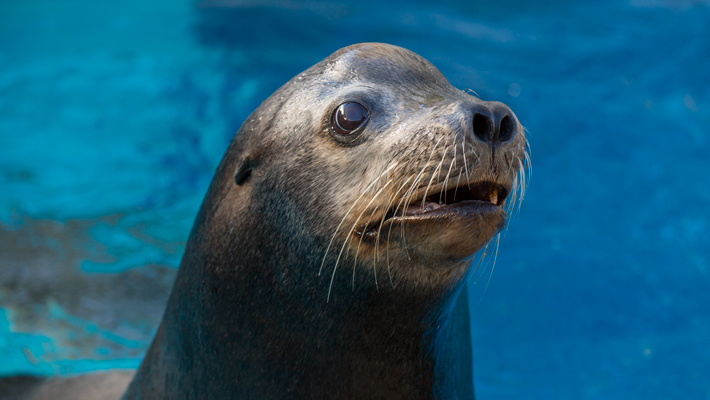Bolivian Squirrel Monkey
Occurs in: Central America, South America
Your adventure through the Americas begins in the tropical rainforests of Bolivia, home to the Bolivian Squirrel Monkey.
Instantly recognisable by their signature coats - a mixture of brown, white, black and gold - these small and energetic primates live amongst the treetops in groups of up to 30 or 40.
Taronga’s Squirrel Monkey troop has recently welcomed a number of babies to the family – can you spot them!? Clue: they’re even smaller than the adults, who usually weigh less than 1kg when fully grown!
Squirrel Monkeys practice cooperative parenting – in fact, all female members of the group will chip in where needed to help raise their young.
Visit the Squirrel Monkey at map ref. 9L
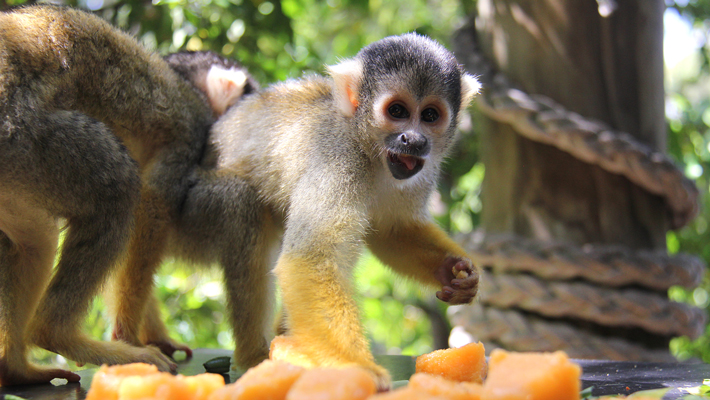

Gila Monster
Occurs in: U.S.A & Mexico
For your next American encounter, you’ll need to head north to the deserts of Arizona.
Covered in brightly coloured, beadlike scales, the Gila Monster is one of just a handful of venomous lizards in the world. Spending up to 90% of its life underground, it emerges only to hunt or sunbake!
The Gila Monster’s bite is very strong, and it is thought that the venom that accompanies it may be more useful as a defence against large predators, as most viable prey items are likely to be overcome by the force of the bite alone.
Visit the Gila Monster at map ref. 13L (Reptile House)
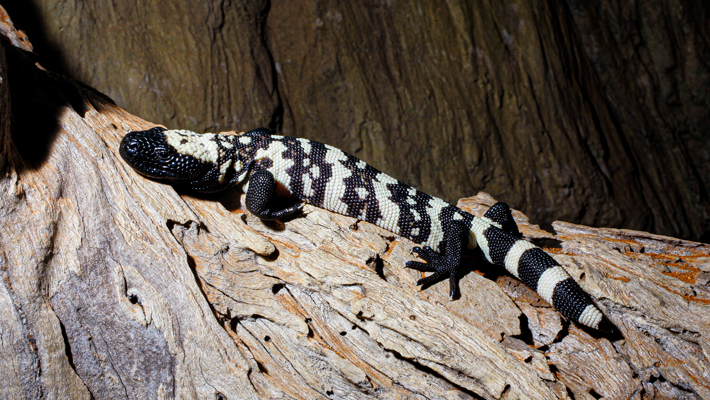

Capybara
Occurs in: South America (excluding Chile)
From Arizona to the Amazon – the world’s largest tropical rainforest and home to an incredible 10% of the world’s known biodiversity, including the world’s largest rodent!
Although it is closely related to the guinea pig, the Capybara can grow close to a metre tall and can weigh up to 70kg!
Remarkably agile on land, Capybaras feel equally at home in the water and even have webbed feet to allow them to dive and swim with ease. In fact, they can hold their breath for up to five minutes!
Capybaras are highly social animals and can be heard communicating with each other by purring, barking, cackling, whistling, squealing and grunting, with each sound delivering a different message and meaning.
Oh, and they also kick their day off by eating their own poo!
Visit the Capybara at map ref. 9I
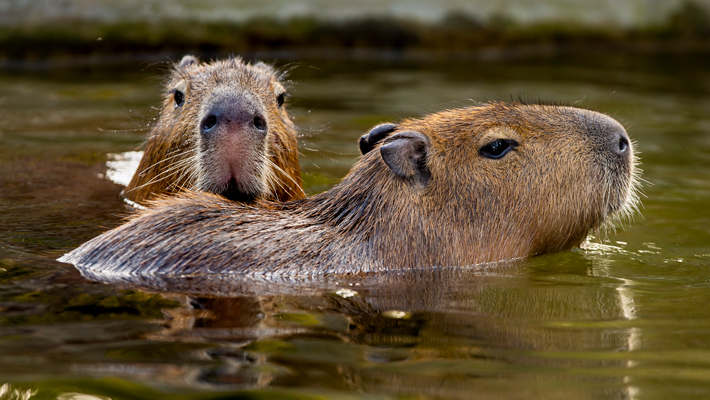

Cotton-top Tamarin
Occurs in: Northwestern Colombia and Panama
As you enter the forests of north-western Colombia, your attention shifts from the forest floor to the treetops, and the puffs of white hair darting from branch to branch.
These forests are home to the aptly named Cotton-top Tamarin.
Cotton-top Tamarins live in family groups led by a dominant male and female couple, who are the only members of the group allowed to breed. Tiny in stature, even when fully grown, a Cotton-top Tamarin will usually not exceed 400 grams in weight!
Highly vocal animals, these arboreal primates use a complex repertoire of vocalisations to communicate with one another about food, predators and more.
Visit the Cotton-top Tamarin at map ref. 8G - or book a VIP behind-the-scenes encounter!

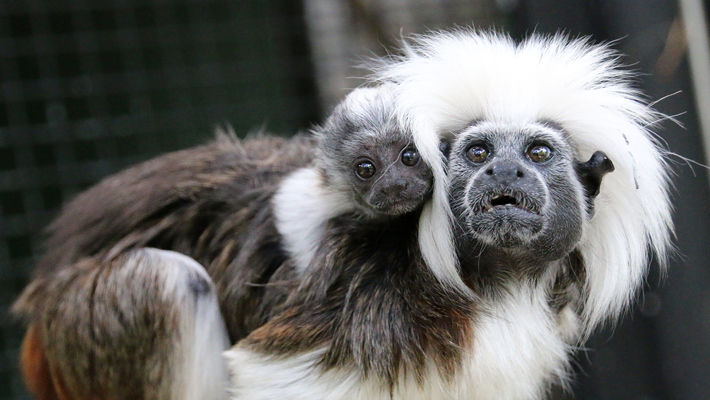

Andean Condor
Occurs in: Peru, Ecuador, Venezuela, Colombia, Chile, Bolivia and Argentina
From Colombia, you must now head south to Peru for a glimpse of the world’s largest bird of prey.
With a wingspan of more than 3 metres and weighing in at up to 15kg, the Andean Condor is the largest of the flying birds.
A member of the vulture family, the bulk of a condor’s diet is made up of ‘carrion’, which is a fancy term for dead or decaying flesh. Whether an animal has passed away naturally, or its carcass discarded after a predator has eaten its fill, a condor can make for a pretty effective one-bird clean-up crew!
Andean Condors are most impressive when seen in full flight – so be sure to catch them as part of Taronga’s QBE Free Flight Bird Show upon your return to Sydney! The show takes place twice a day at 12pm and 3pm at map reference 16G.
Visit the Andean Condor at map ref. 15F or see a Condor in full flight as part of the QBE Free Flight Bird Show at 12pm and 3pm each day.
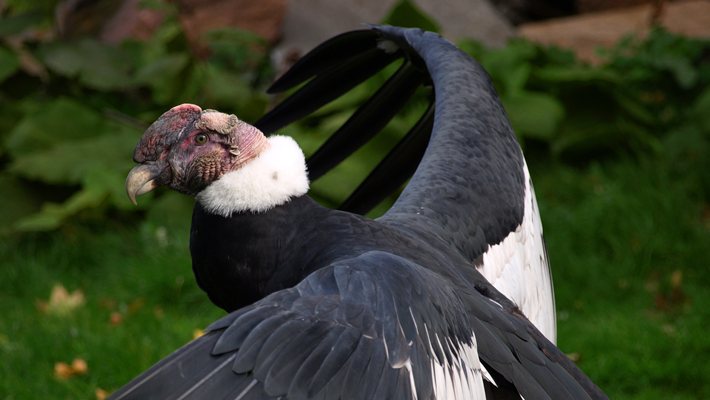

Californian Sea Lion
Occurs in: Western coast of North America
Your journey ends on the Pacific coastline of the United States, home to the highly intelligent and incredibly playful Californian Sea Lion.
Californian Sea Lions are ‘eared seals’, but those ear flaps don’t seem to slow them down! Sleek and powerful, they are faster underwater than any other sea lion or seal species and are capable of speeds of up to 40km per hour.
While they can remain underwater for up to ten minutes without needing to draw breath, they will often practice a behaviour known as ‘porpoising’, which allows them to take short breaths as needed while moving at speed underwater.
Visit the Californian Sea Lion at map ref. 9E, 10E and 11E or as part of Seals for the Wild powered by Red Energy at 11am and 2pm each day in Seal Theatre.
